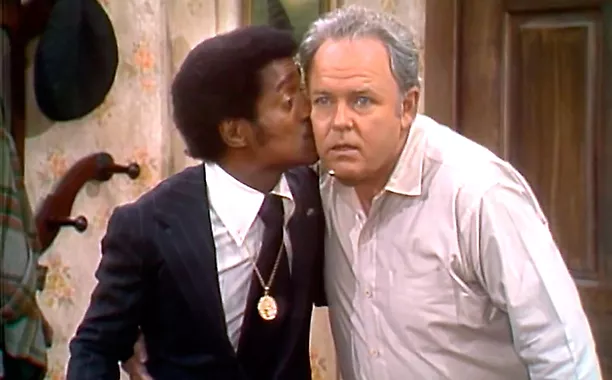
Norman Lear isn’t just a name; he’s a legacy. A true pioneer in television, Lear brought a bold mix of humor and social commentary to the small screen, leaving an indelible mark on American culture. Let’s take a nostalgic dive into his greatest shows—All in the Family, The Jeffersons, and Good Times—and explore the moments that made them unforgettable.
The Genius of Norman Lear: A Brief Overview
Norman Lear’s name is synonymous with groundbreaking television. In the 1970s and beyond, his shows weren’t afraid to tackle tough issues like racism, poverty, and gender inequality, all wrapped in wit and relatability. Let’s look at why his work continues to resonate decades later.
Iconic Moments from All in the Family
The Birth of Archie Bunker
When All in the Family premiered in 1971, audiences were introduced to Archie Bunker, one of the most memorable characters in TV history. Archie, played by Carroll O’Connor, was a bigoted, opinionated patriarch whose stubbornness often collided with the more progressive views of his family.
“Those Were the Days” Theme Song
Who can forget that iconic opening sequence? Archie and Edith singing “Those Were the Days” at the piano became a weekly tradition that tugged at the heartstrings while setting the tone for each episode.
The “Sammy Davis Jr.” Episode
This episode broke barriers when Sammy Davis Jr. planted a kiss on Archie Bunker’s cheek, turning racial tension into comedic gold. It remains one of the most iconic scenes in television history.
Tackling Taboo Topics
From discussions about racism to gender roles, All in the Family wasn’t afraid to push boundaries. Episodes like the one addressing Edith’s near-assault were both heart-wrenching and thought-provoking, proving comedy could have a conscience.
Memorable Scenes from The Jeffersons
Moving on Up
The theme song “Movin’ On Up” is more than catchy—it’s a celebration of progress and ambition. It set the stage for the Jefferson family’s transition from modest beginnings to upper-class living.
George Jefferson’s Wit
George Jefferson, played by Sherman Hemsley, was the perfect mix of charm and arrogance. His sharp tongue and quick wit often left audiences laughing while addressing real issues like racial inequality.
The Interracial Couple
Introducing Tom and Helen Willis, one of television’s first interracial couples, was a groundbreaking move. Their dynamic with George led to both comedic and heartfelt moments that challenged societal norms.
The Cleaners’ Success Story
George’s pride in his dry-cleaning business wasn’t just a storyline; it symbolized the American Dream. It resonated with viewers striving for success, no matter their background.
Heartfelt Moments from Good Times
The Struggles of the Evans Family
Good Times showcased the daily lives of the Evans family as they navigated poverty in Chicago’s South Side. Despite their struggles, the show balanced humor with heart, offering a realistic portrayal of resilience.
JJ’s “Dy-no-mite!”
Jimmie Walker’s catchphrase, “Dy-no-mite!” became a cultural phenomenon, bringing levity to even the most serious episodes.
James Evans’ Departure
When James Evans, the family patriarch, passed away, it was a heartbreaking moment that reflected the real-life challenges of many families. The raw emotion of this storyline left a lasting impact.
The Importance of Education
Michael, the youngest Evans sibling, often brought progressive ideas to the table, highlighting the value of education and activism.
Norman Lear’s Legacy: Why It Still Matters
Norman Lear didn’t just create TV shows; he created conversations. His ability to blend humor with hard-hitting issues changed the way people viewed sitcoms. Whether addressing racism, economic disparity, or gender roles, his work continues to inspire creators today.
Why We Still Love These Shows
- Timeless Themes
The issues Lear tackled—equality, family, ambition—remain relevant. His characters felt real because they faced struggles and joys we still relate to. - Unapologetic Storytelling
Lear never shied away from controversy, and that boldness made his work iconic. - Relatable Characters
From Archie Bunker to Florida Evans, his characters were flawed, funny, and unforgettable.
Conclusion
Norman Lear’s shows are more than entertainment—they’re cultural artifacts that shaped how we talk about society. From All in the Family’s sharp wit to Good Times’ heartfelt realism, his work has stood the test of time. As we revisit these classic moments, it’s clear Lear’s legacy isn’t just alive—it’s thriving.
FAQs
1. What made Norman Lear’s sitcoms so revolutionary?
Lear’s shows combined humor with social commentary, tackling issues like racism, poverty, and gender roles in ways that hadn’t been done before.
2. Why is Archie Bunker such an iconic character?
Archie represented a segment of society grappling with change. His bigoted views clashed with progressive ideals, creating moments of both humor and reflection.
3. How did The Jeffersons break barriers?
By showcasing an upwardly mobile Black family, The Jeffersons challenged stereotypes and highlighted the pursuit of the American Dream.
4. What’s the significance of Good Times?
Good Times gave a voice to underserved communities, portraying the struggles and triumphs of a Black family in a realistic, heartfelt way.
5. How can I watch these classic Norman Lear shows today?
Many of Lear’s shows are available on streaming platforms like Hulu, Amazon Prime, and Peacock, ensuring new generations can enjoy these timeless stories.
Thank you for joining this nostalgic journey through Norman Lear’s masterpieces. Keep the laughter and lessons alive by sharing your favorite moments!
